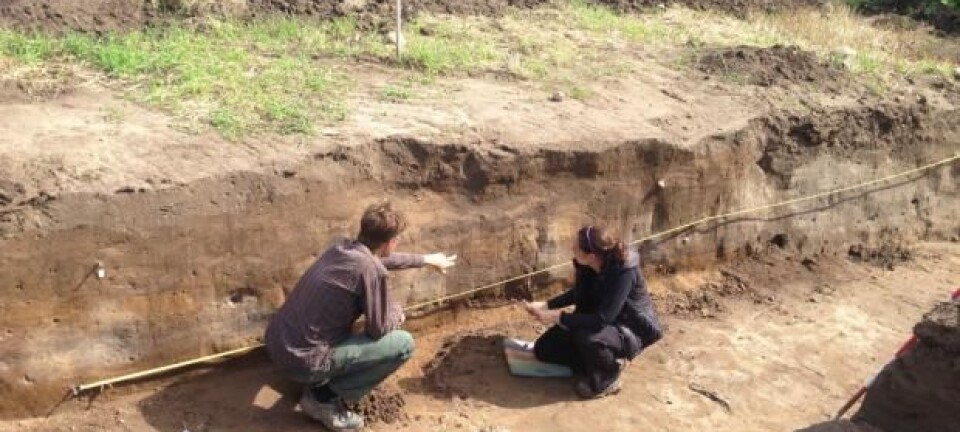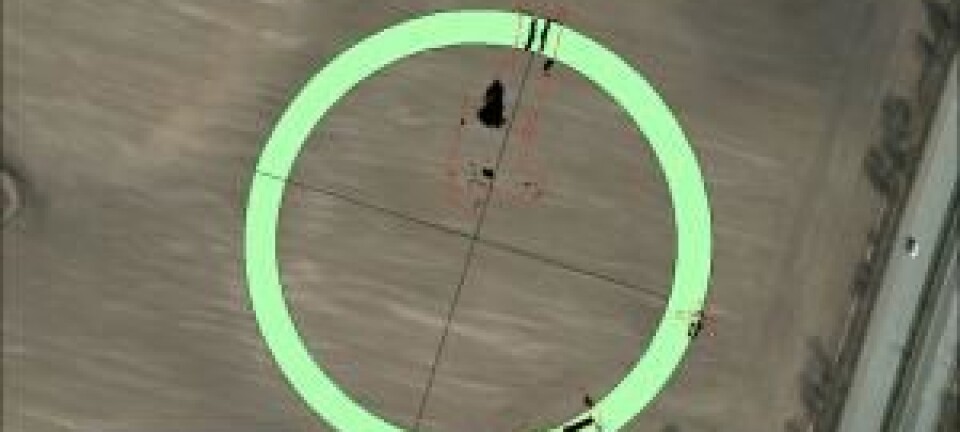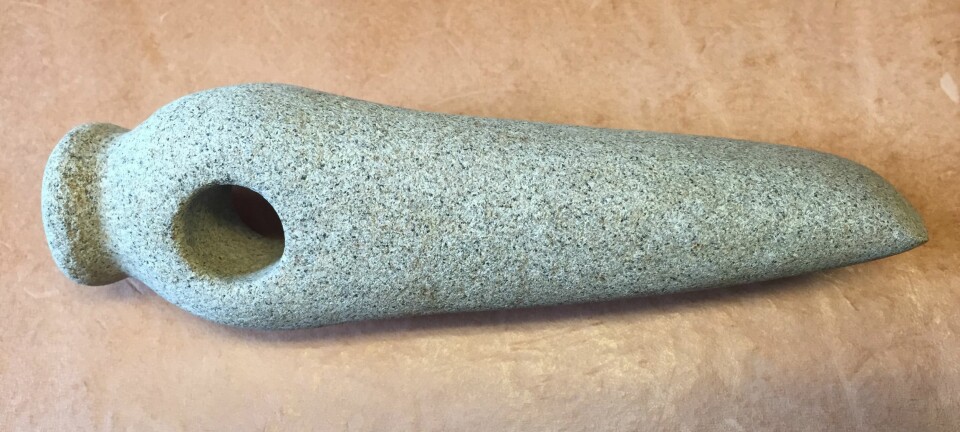Archaeologists discover a Viking toolbox
Follow the archaeologists’ work as they pry into a 1,000-years-old Viking toolbox.
It might sound incredulous, but the small lump of soil pictured above represents one of the most sensational discoveries made at Denmark’s fifth Viking ring fortress: Borgring.
The lump of soil was removed from the area around one of the fortress’ four gates and it contains the remains of a collection of tools, which probably once lay inside a Viking toolbox.
The toolbox is the first direct indication that people have lived in the fortress. There have been only a handful of similar discoveries around the world.
ScienceNordic was allowed to help archaeologist Nanna Holm excavate the toolbox as it was opened for the first time in 1,000 years.
You can watch the work unfold in the video below.
Tools scanned at the hospital
The exciting find first came to the attention of Holm and her colleagues when a couple of amateur archaeologists with metal detectors found a signal near to the fortress’ east gate.
“We could see that there was something in the layers [of soil] around the east gate. If it had been a big signal from the upper layers then it could’ve been a regular plough, but it came from the more ‘exciting’ layers. So we dug it up and asked the local hospital for permission to borrow their CT-scanner,” says Holm.
There suspicions proved to be correct and they discovered a large collection of iron that immediately looked like tools. Even though the toolbox itself was long gone--wood rots away over time--but the placement of the objects suggested that they were not simply random finds.
First direct evidence of life in the Viking castle
Collections of tools from the Viking Age are exceptionally rare. Iron was worth a lot to the Vikings and if anyone had discovered discarded tools, they would have melted them down to repurpose for something else, says Holm.
“The toolbox is the first direct indication of life that we’ve found around the fortress,” she says. “I’m very excited to get a closer look at these objects and get a better understanding of what type of craftsman we’re dealing with.”
The CT-scans revealed that the toolbox probably contained some spoon drills and a drawplate, which the Vikings used this to produce thin wire bracelets. Spoon drills were used to drill holes in wood.
“My first thought is that this looks like something belonging to a carpenter,” says Holm.
You can explore the contents of the toolbox in the interactive image below.
The gate was used again after a fire
The location of the toolbox by the fortress’s east gate is interesting in itself. It may have been placed there after a great fire hit the north and east gates in the second half of the 10th century.
Archaeologists have previously discovered evidence of a fire on the site, after which, a floor was laid inside the gate. It looks as if the gate was inhabited after the fire, says Holm.
“Right now we’re trying to figure out if [the gate house] was used for housing or as a workshop after the fortress was built,” says Holm.
The archaeologists currently think that the moat and the east gate were constructed during the latter half of the 10th century. This is also around the time it burnt--albeit the fire was not strong enough to cause a collapse.
“It looks like the fire was brought under control before it spread, and afterwards they laid two layers of clay inside the gate,” says Holm. “In each layer we find a fireplace, and we found the toolbox in the youngest layer.”
Toolbox was well buried
The craftsmen presumably lived very well, whether he used the east gate as a home or a workshop. It was 30 to 40 square metres of space and had its own fireplace--and of course, the toolbox with the valuable iron tools.
So why did he leave the premises and his toolbox?
Perhaps because at some point, the gate simply collapsed, says Holm.
“We found the tools under the posts, so there’s some evidence that the gate collapsed, and it probably did so because they were rotten, old, and unstable. We only discovered the outline of the posts, suggesting that the rest simply rotted away. Then the tools got buried until we discovered now,” she says.
The box contained 14 Viking tools
The excavation of the soil took two days and ultimately revealed the remains of 14 objects.
Some of them stood out clearly on the CT-scan., for example, the spoon drills and the drawplate, but others were in too poor condition or contained too little iron to appear on screen.
You can watch a time-lapse of the excavation in the video below.
“I’m quite content that we found so many objects in a very small space,” says Holm. “It’s exciting that there are so many things that we couldn’t see on the scan. However, I’d hoped that the things wouldn’t be so corroded, which would’ve allowed me to say what everything is with greater certainty,” says Holm.
X-rays will give more answers
The next step is to x-ray the objects in the toolbox. This should help Holm to work out exactly what they are.
“For example, it looks like one of the spoon drills could in fact be a pair of tweezers or pliers. X-rays should tell us,” she says.
The studies will continue for several weeks to come. Archaeologists are investigating the items individually while taking care to preserve them so they can be put on display next year.
“They don’t look like much now, but conservationists are talented people, and when they’ve finished with them, they’ll be ready for exhibition,” says Holm.
-------------
Read the Danish version of this article on Videnskab.dk
Translated by: Catherine Jex










